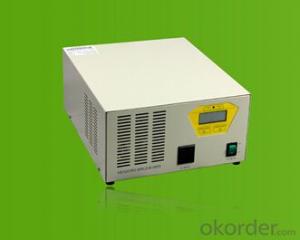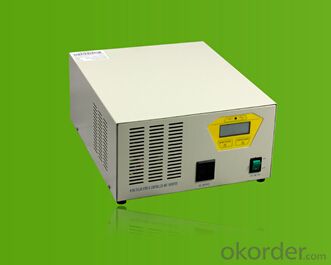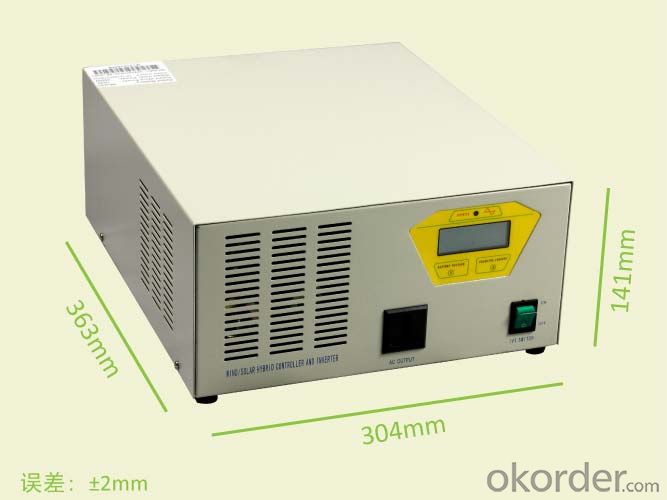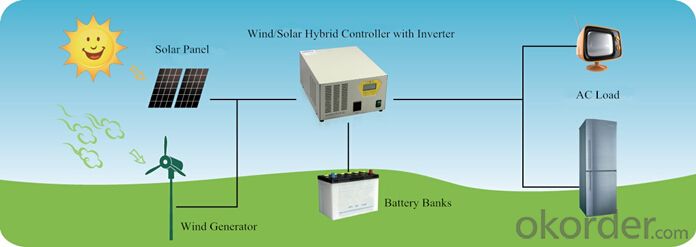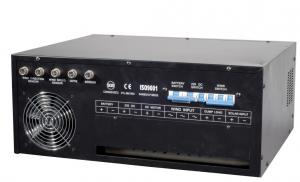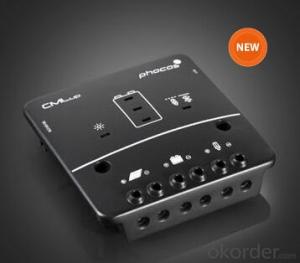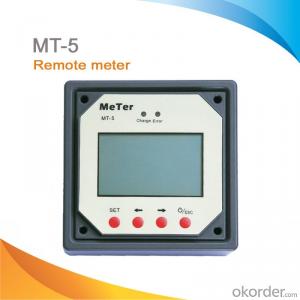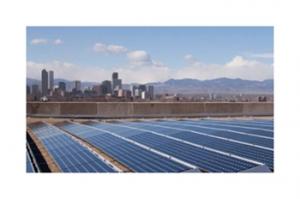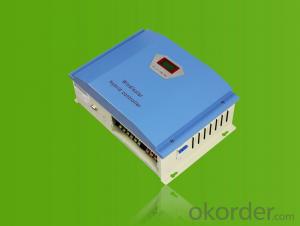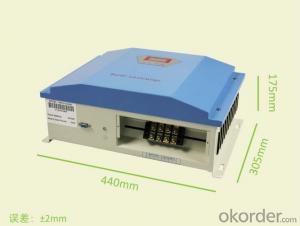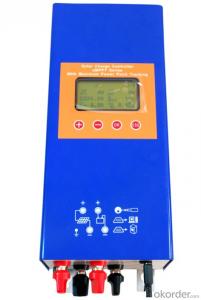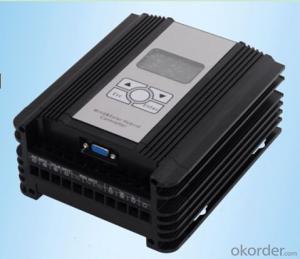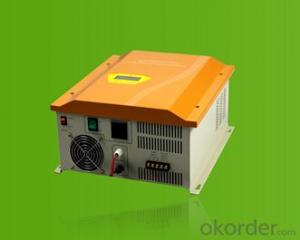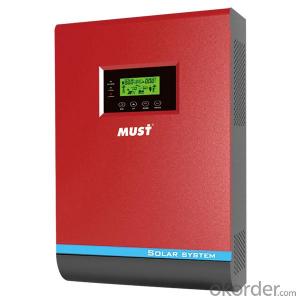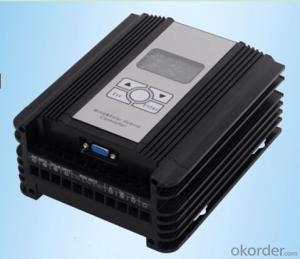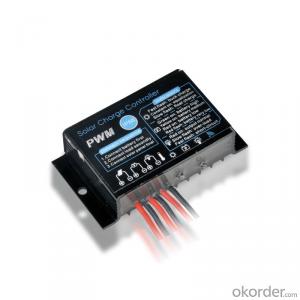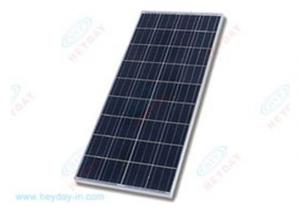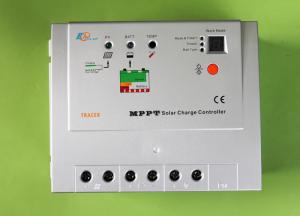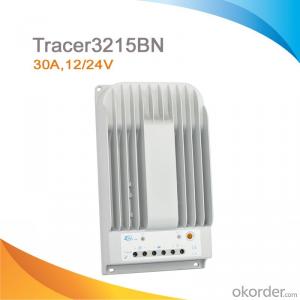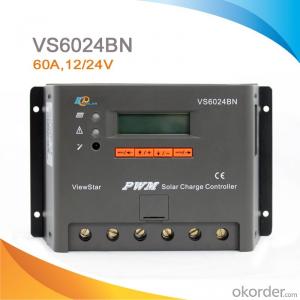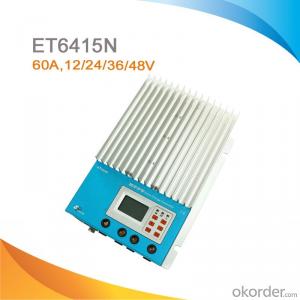Wind Solar Hybrid Controller with Inverter - Solar Controllers from Italy Supplier
- Loading Port:
- Shanghai
- Payment Terms:
- TT or LC
- Min Order Qty:
- 1 unit
- Supply Capability:
- 8000 unit/month
OKorder Service Pledge
OKorder Financial Service
You Might Also Like
I. PRODUCT INTRODUCTION
Wind/solar hybrid controller with inverter is the intelligent power supply with integration of wind/solar control and DC to AC inverse. The apparatus is mainly used for wind /solar renewable energy power system; provide effective power supply for traffic inconvenience, harsh environment of mountain area, a pasturing area, border, islands and other areas without electricity. With decent appearance, easy operation, and visual indication of LCD, the controller has perfect protection function, high charging efficiency and low no-load loss.
II. PERFORMANCE FEATURES
Perfect protection function, thus the system has higher reliability.
LCD display function, visually display battery voltage and charge current.
Integrated design of controller and inverter, with simple and easy maintenance.
PWM stepless unload mode, which burn excess power into dump load, making the battery charging in the best status.
Power frequency toroidal transformer, ensures inverter has high efficiency and low no-load loss.
Pure sine wave output, compared with square wave or modified wave, has higher efficiency and higher capability of driving load.
Certificate for Invention Patent of wind/solar hybrid controller with inverter, European CE.
III. APPLICATION AREAS
Domestic household wind power and photovoltaic power system, wind power station and photovoltaic power station.
Coastal islands, remote mountainous, border posts for regions shortage of or without electricity.
Government demonstration projects, landscape lighting project.
Mobile communication base station, expressway and other non-residential regions.
IV. 300W-500W TECHNICAL PARAMETERS
Product Model | WWSI0303-12 | WWSI0303-24 | WWSI0505-12 | WWSI0505-24 |
Rated wind turbine power | 300 W | 300 W | 500 W | 500 W |
Rated solar panel power | 90 W | 90 W | 150 W | 150 W |
Floating charging voltage | 14.5 V | 29 V | 14.5 V | 29 V |
Dump load current | 25 A | 13 A | 42 A | 21 A |
Rated inverter output capacity | 300 VA | 300 VA | 500 VA | 500 VA |
12 V | 24 V | 12 V | 24 V | |
Over voltage shutoff | 17 V | 34 V | 17 V | 34 V |
Over voltage recovery | 16.5 V | 33 V | 16.5 V | 33 V |
Battery over-discharge shutoff | 10.8 V | 21.6 V | 10.8 V | 21.6 V |
Battery over-discharge recovery | 12 V | 24 V | 12 V | 24 V |
No-load loss current | ≤0.9 A | ≤0.4 A | ≤1 A | ≤0.5 A |
Net weight | 9 kg | 9 kg | 11 kg | 11 kg |
Dimension | 370×300×130 mm | |||
Output wave | pure sine wave | |||
Display mode | LCD | |||
Cooling | Fan | |||
Rated output power | 110/120/220/230/240 VAC | |||
Wave distortion | ≤4% | |||
Output frequency | 50/60±0.5 Hz | |||
Dynamic response | 5% | |||
Power factor | ≥0.8 | |||
Over-load capacity | 120% 1min, 150% 10s | |||
Inverter efficiency | maximum 90% | |||
Isolating mode | frequency toroidal transformer | |||
Protection level | ||||
Noise (1 meter) | ≤40dB | |||
Insulating strength | 1500VAC,1min | |||
Protection function | Battery over-charge protection; battery over-discharge protection; battery reverse connection protection; output overload protection; output short circuit protection; overheating protection; solar reverse charge protection; solar reverse connection protection; automatic brake and manual brake protection; lighting protection | |||
Working temperature | -20~+55℃ | |||
Ambient humidity | ||||
Working altitude | ≤4000m | |||
In order to serve our customers better. Our company can adjust parameters configuration according to customer’s requirement. | ||||
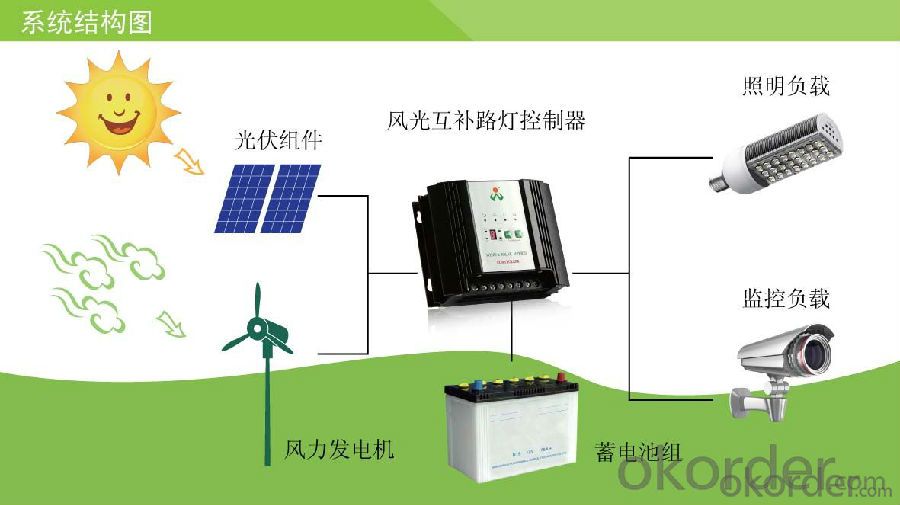
- Q: Can a solar controller be used in both residential and commercial applications?
- Yes, a solar controller can be used in both residential and commercial applications. Solar controllers are designed to regulate and optimize the charging of batteries in solar power systems, regardless of the scale or purpose of the installation. They can be used in small residential setups as well as larger commercial systems, providing efficient control and protection for solar panels and batteries in both settings.
- Q: How do I integrate a solar controller with a smart home automation system?
- To integrate a solar controller with a smart home automation system, you need to ensure compatibility between the solar controller and your smart home automation hub or platform. First, check if your solar controller has any built-in communication protocols like Wi-Fi, Zigbee, or Z-Wave. If it does, you can connect it directly to your smart home hub. If not, you may need to use a third-party gateway or bridge that can translate the communication signals from the solar controller to the smart home automation system. Once connected, you can then monitor and control your solar system through your smart home automation app or interface, allowing you to manage energy production, track usage, and automate actions based on solar generation.
- Q: How do solar controllers protect batteries?
- Solar controllers protect batteries by regulating the amount of charge that flows into them from the solar panels. They prevent overcharging, which can damage the battery, and they also prevent excessive discharge, which can reduce the battery's lifespan. Additionally, solar controllers provide features like temperature compensation and low voltage disconnect, further safeguarding the batteries from potential damage.
- Q: How does a solar controller prevent battery over-temperature?
- A solar controller prevents battery over-temperature by monitoring the temperature of the battery and regulating the charging process accordingly. It controls the charging current and voltage to prevent excessive heat buildup, which can damage the battery. Additionally, some solar controllers have built-in temperature sensors that automatically adjust the charging parameters based on the battery's temperature, ensuring optimal charging performance and preventing overheating.
- Q: What is the temperature rating of a solar controller?
- A solar controller's temperature rating usually specifies the optimal temperature range within which it operates efficiently and effectively. This rating varies depending on the model and manufacturer, but generally falls between -20°C to 55°C (-4°F to 131°F). It is crucial to take this rating into account when choosing a solar controller for your system, as using it outside of the recommended temperature range may result in decreased performance or even controller damage.
- Q: Can a solar controller handle both solar panels and batteries?
- Yes, a solar controller can handle both solar panels and batteries. A solar controller regulates the charging process of batteries using the electricity generated by solar panels. It ensures that the batteries are charged efficiently and protects them from overcharging or discharging.
- Q: Can a solar controller be used with different types of inverters?
- Yes, a solar controller can be used with different types of inverters. A solar controller, also known as a charge controller, regulates the charging process of a solar battery or battery bank by controlling the flow of current from the solar panels to the batteries. On the other hand, an inverter converts the direct current (DC) electricity produced by the solar panels into alternating current (AC) electricity that can be used to power household appliances and other electrical devices. The solar controller is typically connected in between the solar panels and the batteries, while the inverter is connected to the batteries. The solar controller monitors the battery's state of charge and adjusts the charging current accordingly to prevent overcharging or undercharging. It does not directly interact with the inverter. Therefore, the compatibility between a solar controller and an inverter is not a concern as they serve different purposes and operate independently of each other. As long as the solar controller is compatible with the solar panel system and battery bank, it can be used in conjunction with any type of inverter, whether it is a pure sine wave inverter, modified sine wave inverter, or grid-tie inverter.
- Q: How does a solar controller handle battery reconditioning?
- A solar controller handles battery reconditioning by periodically initiating a desulfation process. This process involves sending high voltage pulses to the battery, which helps break down and remove sulfur build-up on the battery plates. By doing so, it helps restore the battery's capacity and prolong its overall lifespan.
- Q: How does a solar controller prevent damage to the solar panels during extreme temperature conditions?
- A solar controller prevents damage to solar panels during extreme temperature conditions by regulating the amount of voltage and current delivered to the panels. This helps in maintaining the optimal operating temperature range for the panels, preventing overheating or freezing, which can cause permanent damage. Additionally, some advanced solar controllers have built-in temperature sensors that adjust the charging parameters accordingly to protect the panels from temperature-related stress.
- Q: What is the maximum load capacity of a solar controller?
- The maximum load capacity of a solar controller depends on its specifications and design. It can range from a few amps to several hundred amps, depending on the model and intended application.
Send your message to us
Wind Solar Hybrid Controller with Inverter - Solar Controllers from Italy Supplier
- Loading Port:
- Shanghai
- Payment Terms:
- TT or LC
- Min Order Qty:
- 1 unit
- Supply Capability:
- 8000 unit/month
OKorder Service Pledge
OKorder Financial Service
Similar products
Hot products
Hot Searches
Related keywords
